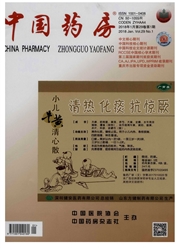

 中文摘要:
中文摘要:
目的:为推动乡镇卫生院进一步实施国家基本药物制度提供依据。方法:采用随机系统整群抽样方法抽取某省5%的乡镇卫生院为样本,通过发放调查表获取其国家基本药物制度实施前(2009、2010年)和实施后(2011-2013年)的卫生资源配置情况、卫生服务情况、收支情况等,进行统计、对比和评价。结果:本次共调查了46个乡镇卫生院,回收乡镇卫生院机构调查表46份。样本乡镇卫生院平均床位数由2009年的15.1张增加到2013年的19.4张。年度平均门诊量由2009年的1.12万人次上升到2013年的1.61万人次,年度平均出院人次由2009年的644人次增加到2013年的924人次。政府财政投入占总收入比例由2009年的25.9%上升到2013年的47.1%,药品收入占总收入比例由54.9%下降到29.7%,药品利润率由25.5%下降到3.7%,收支结余亏损比例由17.4%下降到4.3%。辖区人口年平均到乡镇卫生院就诊次数从2009年的0.47次增加到2013年的0.74次,次均住院和门诊药品费用分别由805和28.1元下降到718和24.1元。结论:国家基本药物制度实施对门诊服务未产生消极影响,对住院服务利用则产生了一定的抑制作用。国家基本药物制度的实施有效地降低了药品经济负担,但是卫生总负担却没有下降。这表明单一依靠推行国家基本药物制度来控制过快上涨的卫生费用是难以实现的,需要医药卫生的综合改革、协同、联动,才能有效缓解“看病贵”的问题。
 英文摘要:
英文摘要:
OBJECTIVE: To provide reference for the further implementation of national essential medicine system of township hospitals. METHODS: 5% township hospitals in a province were collected as sample by using random cluster sampling method, and statistics, comparison and evaluation was made by issuing questionnaires to get health resources distribution status, health ser- vice status and income and expenditure status before (in 2009 and 2010) and after (from 2011 to 2013) the implementation of na- tional essential medicine system of township hospitals. RESULTS:Totally 46 township hospitals were surveyed and totally 46 ques- tiormaires of township hospitals were recycled. Average number of beds in township hospitals increased from 15.1 beds in 2009 to 19.4 beds in 2013. Average annual outpatients increased from 11 200 in 2009 to 16 100 in 2013, and average number of hospital discharge increased from 644 in 2009 to 924 in 2013. The proportion of government financing to total income increased from 25.9% in 2009 to 47.1% in 2013, proportion of drug income to the total income decreased from 54.9% to 29.7%, drug profit rate decreased from 25.5% to 3.7%, and proportion of township hospital under deficit decreased from 17.4% to 4.3%. Average time that residents see a doctor in township health center increased from 0.47 in 2009 to 0.74 in 2013, and cost of average hospitaliza- tion and outpatient drugs decreased from 805 to 718 and 28.1 to 24.1, respectively. CONCLUSIONS:The implementation of nation- al essential medicine system has no negative effect on outpatient service, but first inhibits then promotes the inpatient services. Na- tional essential medicine system has effectively cut down the financial burden of drugs, but it has no effect on total health burden.It is difficult to realize the excessive rapid rise of health ex- pense by the single implementation of essential medicine sys- tem, and it needs comprehensive reform, collaboration and in- teraction of medicine and health to effectively relieve the pr
 同期刊论文项目
同期刊论文项目
 同项目期刊论文
同项目期刊论文
 期刊信息
期刊信息
